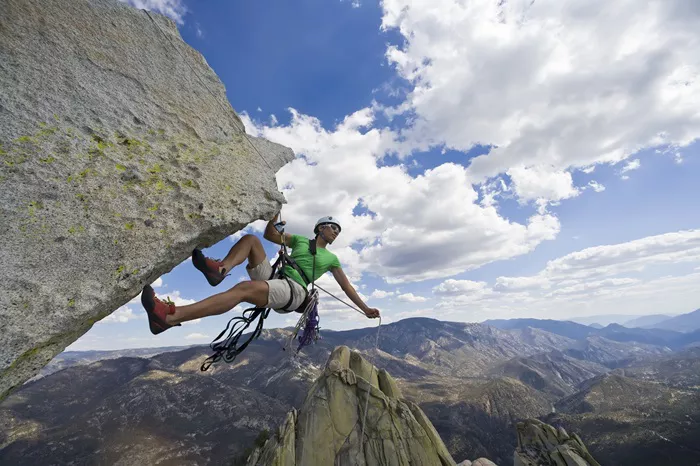Rock climbing places exceptional demands on finger strength, making it a critical component of climbing performance. Whether you’re a beginner aiming to conquer your first outdoor route or an advanced climber tackling challenging overhangs, developing strong fingers is essential for success and injury prevention. The ability to grip, pull, and maintain control on various types of holds relies heavily on the strength and endurance of your fingers and forearms.
Understanding Finger Anatomy and Function
Before diving into training methods, it’s crucial to understand the anatomy and biomechanics of the fingers. The fingers consist of intricate muscle groups, tendons, and joints that work in synergy to provide strength and dexterity. Key muscles involved in finger strength include the flexor digitorum profundus and superficialis, responsible for bending the fingers, and the intrinsic hand muscles, crucial for grip strength and fine motor control.
Understanding the role of tendons is equally important, as they transmit the force generated by muscles to the bones of the fingers, allowing for controlled movement and grip. Joints such as the proximal and distal interphalangeal joints enable the fingers to flex and extend, essential for gripping and releasing holds during climbing.
Assessing Your Current Finger Strength
Effective training begins with a clear understanding of your current finger strength levels. This section will guide you through practical methods to assess your grip strength, endurance, and weaknesses, providing a baseline for your training program. Tools such as grip dynamometers and finger strength testing devices can quantify your maximum grip force and endurance, helping you track progress over time.
Essential Techniques for Finger Strength Development
1. Isometric Training: Building Static Finger Strength
Isometric exercises are foundational for developing maximum finger strength without joint stress. This section will outline various isometric holds, such as dead hangs and lock-offs, explaining their benefits and how to integrate them into your training regimen effectively. Isometric training targets the muscle fibers responsible for sustained grip strength, enhancing your ability to maintain control on small holds and overhangs.
2. Dynamic Finger Training: Improving Contact Strength
Dynamic movements are integral to climbing success, requiring quick bursts of power from the fingers. Techniques like campus board exercises and dynamic fingerboarding will be covered here, focusing on their role in enhancing contact strength and coordination. Dynamic finger training improves your ability to latch onto holds dynamically and maintain contact during dynamic movements, mimicking the demands of bouldering and sport climbing.
3. Fingerboarding Protocols: Structured Workouts for Progression
Fingerboards are essential tools for systematic finger strength development. This section will detail structured protocols for fingerboarding sessions, including hang times, grip types (e.g., crimp, pinch), and rest intervals, designed to optimize strength gains while minimizing injury risks. Progressive overload principles, such as increasing hang duration and adjusting grip difficulty, ensure continual adaptation and improvement in finger strength.
4. Specificity in Finger Training: Mimicking Climbing Movements
To translate finger strength gains into climbing performance, specificity is key. This section explores exercises that mimic climbing movements, such as grip position variations and movement patterns on climbing holds, enhancing functional strength applicable to real-world climbing scenarios. Emphasis will be placed on improving finger strength in positions and movements commonly encountered during different climbing styles and routes.
5. Injury Prevention Strategies: Balancing Intensity and Recovery
Intense finger training carries inherent injury risks, making injury prevention strategies paramount. Topics covered include proper warm-up techniques, recovery protocols (e.g., active rest, stretching), and identifying early signs of overuse to maintain long-term finger health. Understanding the importance of rest and recovery in between training sessions will help mitigate the risk of tendonitis, pulley injuries, and other common climbing-related finger injuries.
Advanced Techniques and Special Considerations
1. Campus Board Training: Advanced Applications and Progressions
For advanced climbers seeking to push their limits, campus board training offers specific challenges. This section delves into advanced campus board exercises, plyometric drills, and strategies for progressive overload to continually challenge finger strength thresholds. Techniques for optimizing power output and increasing contact strength on small campus rungs will be explored, enhancing your ability to perform dynamic movements with precision and control.
2. Finger Strength Maintenance: Sustaining Gains Long-Term
Maintaining peak finger strength requires ongoing dedication and strategic planning. Discussions will include tapering strategies, cross-training options (e.g., antagonist muscle training), and adjusting training volume according to seasonal climbing goals. Strategies for integrating finger strength maintenance into your long-term climbing schedule will ensure sustained performance gains and injury prevention throughout your climbing career.
see also: What Type Of Rock Climbing Doesn’t Use Rope
Nutrition and Supplement Guidelines for Optimal Performance
Proper nutrition and supplementation play crucial roles in supporting optimal finger strength development and recovery. This section will outline dietary considerations, hydration tips, and recommended supplements (e.g., protein, omega-3 fatty acids) for climbers aiming to maximize their training outcomes. Understanding the role of macronutrients and micronutrients in muscle recovery and repair will help optimize your climbing performance and overall finger strength development.
Conclusion: Integrating Finger Strength Training into Your Climbing Journey
In conclusion, developing strong fingers for rock climbing is a journey that demands commitment, patience, and informed training strategies. By integrating the principles outlined in this article into your climbing regimen, you’ll enhance your finger strength, improve your climbing performance, and reduce the risk of injury, ultimately enabling you to tackle new challenges with confidence. Remember, consistency and proper technique are key to achieving lasting improvements in finger strength and climbing proficiency.
related topics:
- Essential Gear And Tips To Start Your Rock Climbing Journey
- Forearm Pain After Rock Climbing: Causes, Prevention, And Recovery
- Exploring The Most Common Types Of Rock Climbing

